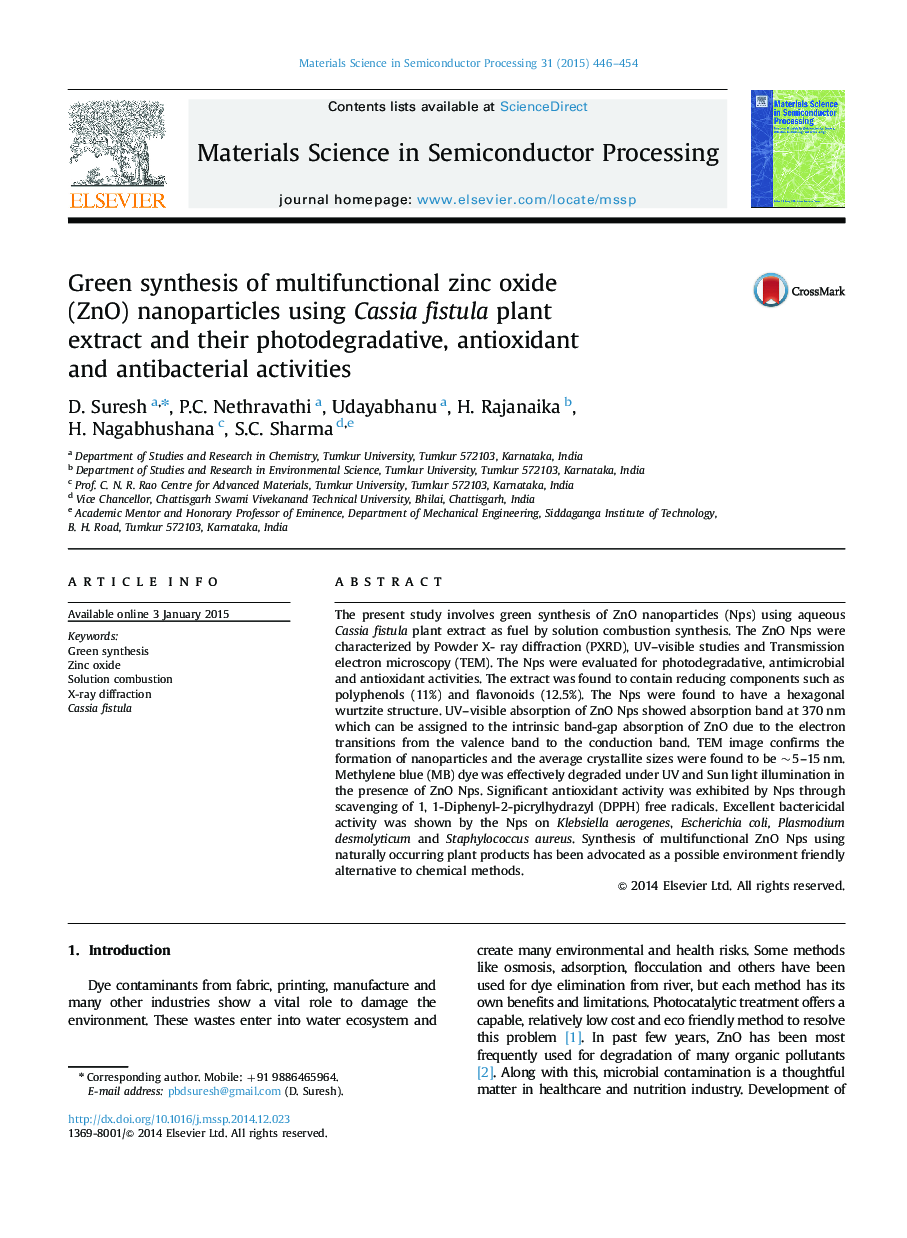| Article ID | Journal | Published Year | Pages | File Type |
|---|---|---|---|---|
| 728083 | Materials Science in Semiconductor Processing | 2015 | 9 Pages |
The present study involves green synthesis of ZnO nanoparticles (Nps) using aqueous Cassia fistula plant extract as fuel by solution combustion synthesis. The ZnO Nps were characterized by Powder X- ray diffraction (PXRD), UV–visible studies and Transmission electron microscopy (TEM). The Nps were evaluated for photodegradative, antimicrobial and antioxidant activities. The extract was found to contain reducing components such as polyphenols (11%) and flavonoids (12.5%). The Nps were found to have a hexagonal wurtzite structure. UV–visible absorption of ZnO Nps showed absorption band at 370 nm which can be assigned to the intrinsic band-gap absorption of ZnO due to the electron transitions from the valence band to the conduction band. TEM image confirms the formation of nanoparticles and the average crystallite sizes were found to be ~5–15 nm. Methylene blue (MB) dye was effectively degraded under UV and Sun light illumination in the presence of ZnO Nps. Significant antioxidant activity was exhibited by Nps through scavenging of 1, 1-Diphenyl-2-picrylhydrazyl (DPPH) free radicals. Excellent bactericidal activity was shown by the Nps on Klebsiella aerogenes, Escherichia coli, Plasmodium desmolyticum and Staphylococcus aureus. Synthesis of multifunctional ZnO Nps using naturally occurring plant products has been advocated as a possible environment friendly alternative to chemical methods.
